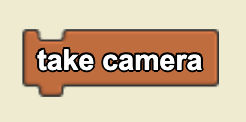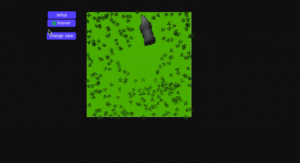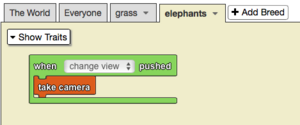Take Camera: Difference between revisions
(Marked this version for translation) |
(Marked this version for translation) |
||
| (2 intermediate revisions by the same user not shown) | |||
| Line 18: | Line 18: | ||
<!--T:4--> | <!--T:4--> | ||
==Syntax== | |||
<code>(in reference to the agent itself) take camera</code> | <code>(in reference to the agent itself) take camera</code> | ||
==Example== <!--T:10--> | |||
<!--T:11--> | |||
[[File:take_camera_example.gif|alt=Take Camera example gif|thumb]] | |||
[[File:take_camera_example.png|alt=Take Camera example code|thumb]] | |||
<!--T:12--> | |||
When the ‘change view’ button is pushed, the camera angle to over the shoulder of the elephant agent. Note that if there were multiple elephants, a single elephant would take the camera. | |||
==Related Blocks== <!--T:5--> | ==Related Blocks== <!--T:5--> | ||
Latest revision as of 18:18, 11 August 2023
Enables perspective of over-agent’s-shoulder view; i.e., the camera follows the agent around.
take camera is a code block part of the agents drawer.
Usage
take camera changes the camera perspective to be from the point of view of the agent executing the code.
take camera can be useful for implementing interactive games from the first-person perspective.
Syntax
(in reference to the agent itself) take camera
Example
When the ‘change view’ button is pushed, the camera angle to over the shoulder of the elephant agent. Note that if there were multiple elephants, a single elephant would take the camera.


